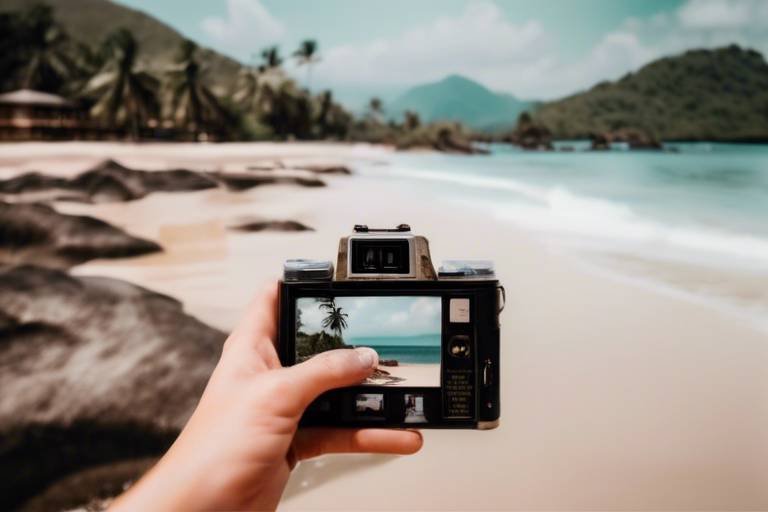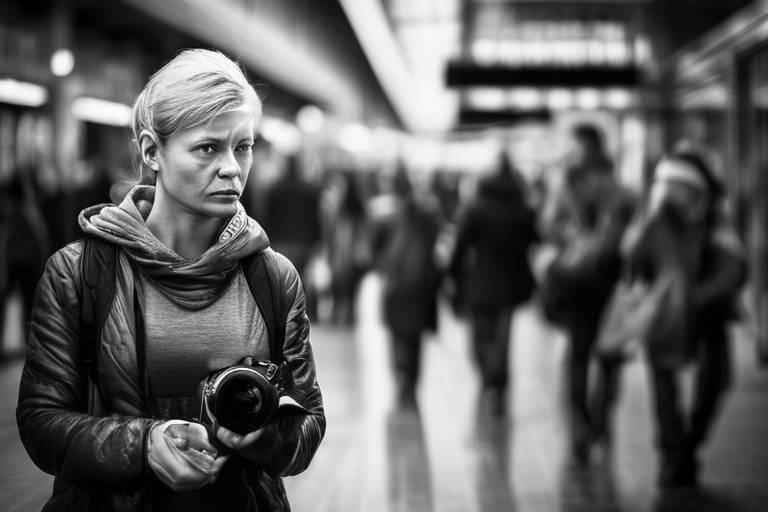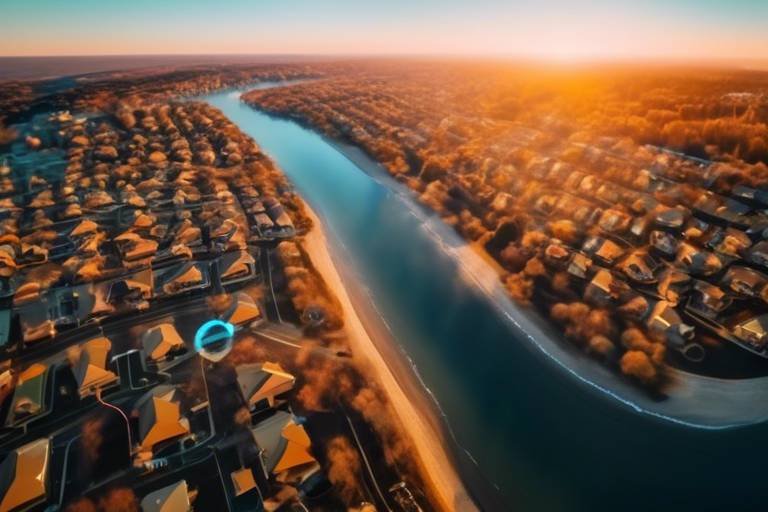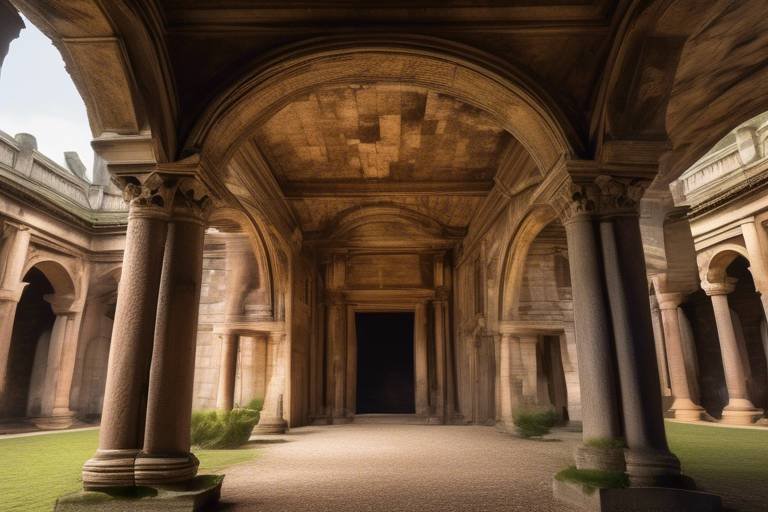How to Shoot Beautiful Travel Photos in Harsh Sunlight
When it comes to capturing stunning travel photos in harsh sunlight, mastering the art of photography becomes even more crucial. The intense brightness of the sun can present challenges, but with the right techniques and tools, you can turn those challenges into opportunities to create beautiful and vibrant images that truly stand out.
One key aspect to consider when shooting in harsh sunlight is understanding the light conditions. Assessing the angle, intensity, and direction of the sunlight is essential in order to adapt your photography settings accordingly. By paying attention to these factors, you can ensure that your images are well-exposed and visually striking.
Filters and lens hoods play a significant role in controlling glare, reducing reflections, and enhancing colors when shooting in bright sunlight. Polarizing filters, in particular, can help you achieve more balanced and vibrant photos by cutting through the harsh glare and improving color saturation. Additionally, using a lens hood can prevent unwanted lens flares and maintain the quality of your images.
Choosing the right filter for the specific lighting conditions and desired photographic effects is crucial. Whether you need to reduce reflections on water surfaces or enhance the blue sky, selecting the appropriate filter can make a significant difference in the outcome of your travel photos.
Shadows can be your best friend when shooting in harsh sunlight. By creatively incorporating shadows into your compositions, you can add depth, contrast, and visual interest to your images. Experimenting with silhouettes against the sun can also result in unique and artistic travel photos that capture the essence of the moment.
Adjusting exposure settings and white balance is key to achieving well-balanced and natural-looking travel photos in bright light conditions. By carefully controlling the highlights and shadows in your images, you can retain important details and prevent overexposure or underexposure, ensuring that your photos are visually appealing.
Post-processing tools and techniques can further enhance and fine-tune your travel photos captured in harsh sunlight. Whether you need to adjust the contrast, saturation, or sharpness of your images, post-processing allows you to refine your photos for a professional finish that truly showcases your photography skills.

Understanding Light Conditions
When it comes to shooting beautiful travel photos in harsh sunlight, understanding light conditions is crucial. The angle, intensity, and direction of sunlight play a significant role in determining the outcome of your photographs. By assessing these factors, you can adapt your photography settings to make the most out of the challenging lighting conditions.
One way to deal with harsh sunlight is by using filters and lens hoods. Polarizing filters can help control glare and reduce reflections, resulting in clearer and more vibrant images. Lens hoods, on the other hand, can prevent unwanted light from entering the lens, helping enhance colors and contrast in your photos.
Choosing the right filter is essential for achieving the desired photographic effects. Different filters serve various purposes, such as reducing haze, enhancing colors, or controlling reflections. Selecting the appropriate filter based on the specific lighting conditions can significantly improve the quality of your travel photos taken in bright sunlight.
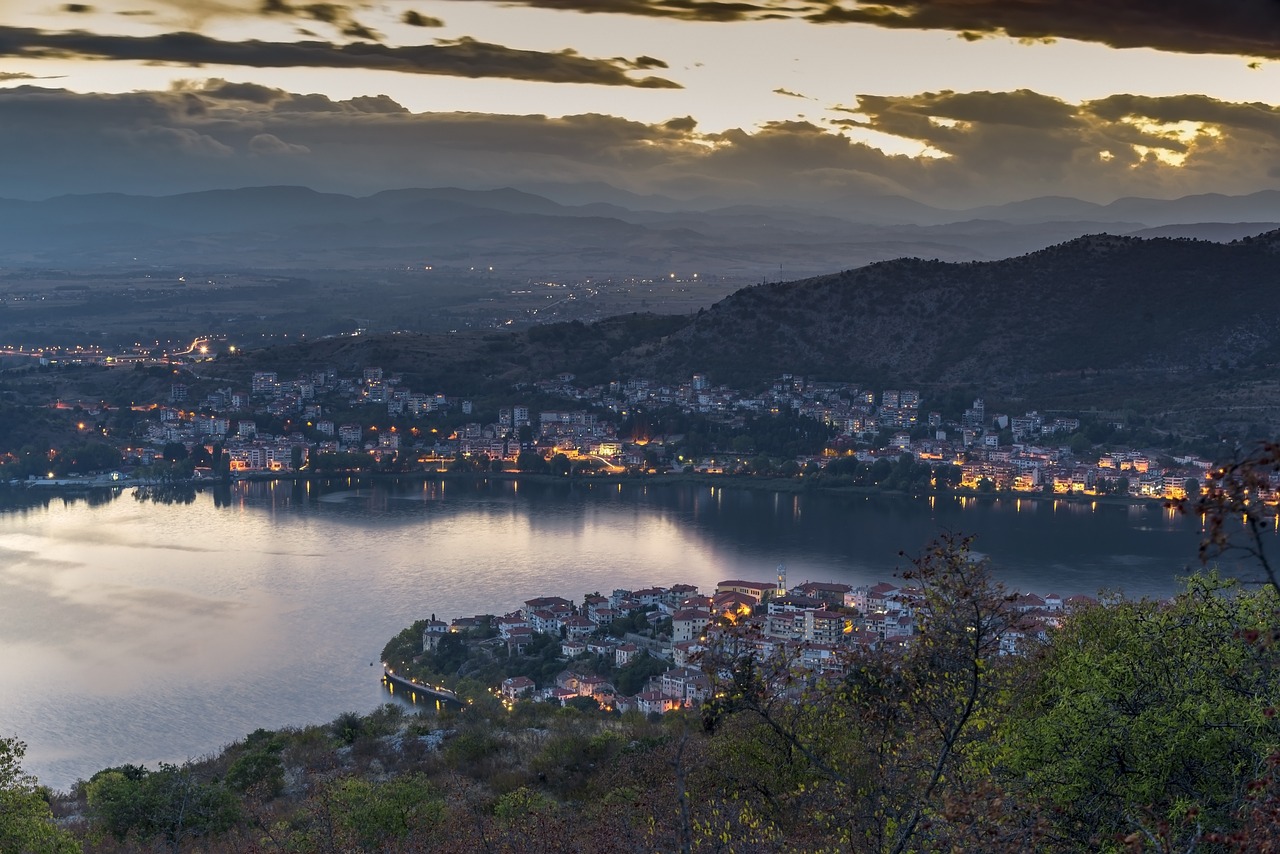
Using Filters and Lens Hoods
When it comes to shooting beautiful travel photos in harsh sunlight, one of the key tools in a photographer's arsenal is the use of filters and lens hoods. These accessories play a crucial role in controlling glare, reducing reflections, and enhancing colors in bright sunlight conditions.
By incorporating a polarizing filter, photographers can effectively cut through the intense sunlight, resulting in images with richer colors and reduced glare. Additionally, lens hoods help in shading the lens from direct sunlight, preventing unwanted lens flares and maintaining image clarity.
It's essential to choose the right filter based on the specific lighting conditions and the desired photographic effects. Different filters offer varying degrees of light reduction and color enhancement, so selecting the appropriate one can significantly impact the final outcome of your travel photos.
When faced with harsh sunlight, photographers can benefit from the creative use of shadows to add depth and visual interest to their images. Shadows not only provide contrast but also serve as a powerful compositional element, guiding the viewer's eye through the scene.
One technique that photographers can explore is playing with silhouettes. By positioning subjects against the sun, photographers can create dramatic silhouettes that convey a sense of mystery and intrigue. Silhouettes offer a unique way to capture the essence of a location, evoking emotions and storytelling in a single frame.
Adjusting exposure settings and white balance is crucial when shooting in harsh sunlight to ensure well-balanced and natural-looking travel photos. By carefully managing highlights and shadows, photographers can retain details in both bright and dark areas of the image, avoiding overexposure or underexposure.
Post-processing plays a significant role in refining travel photos captured in harsh sunlight. Through the use of editing tools and techniques, photographers can enhance colors, adjust contrast, and fine-tune the overall look of their images for a professional finish. Post-processing allows photographers to bring out the full potential of their photos, transforming them into stunning visual narratives.
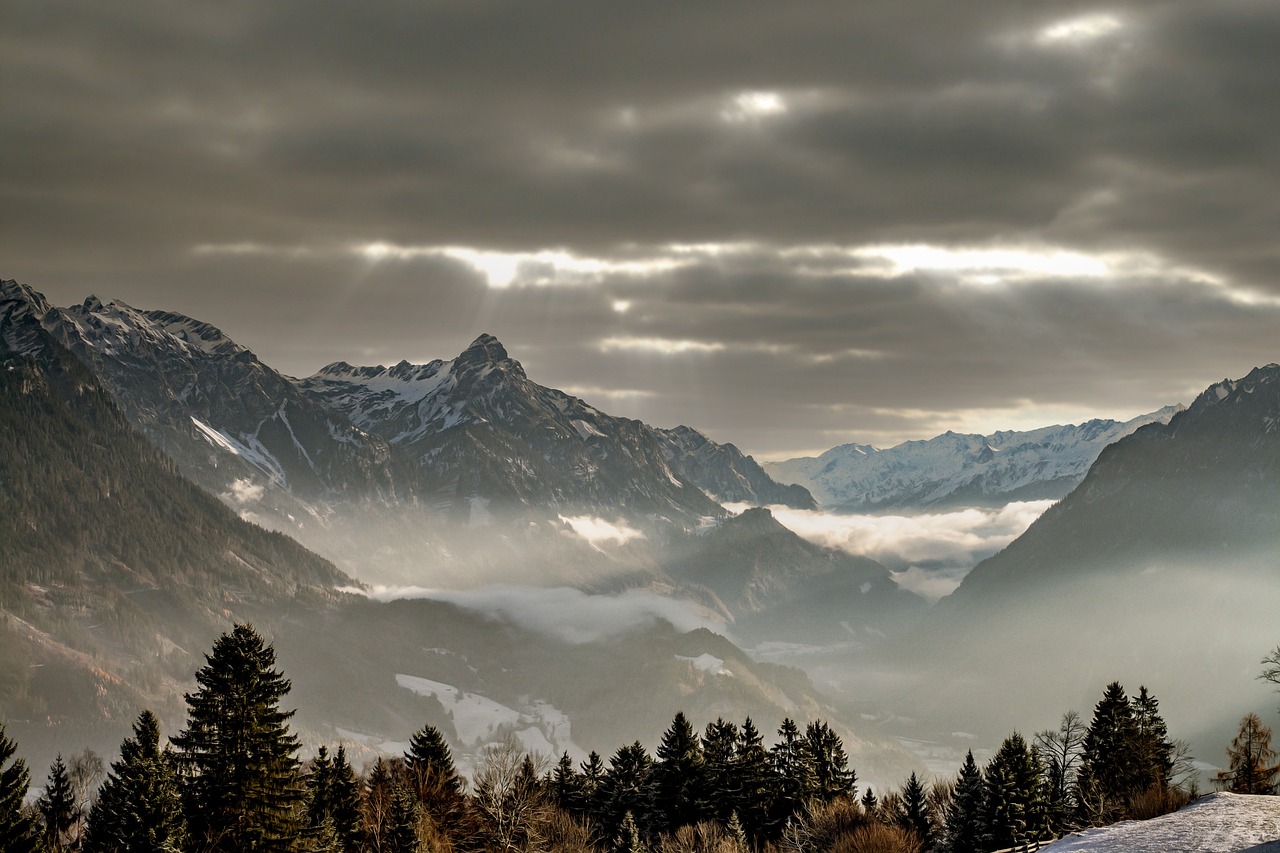
Choosing the Right Filter
When it comes to choosing the right filter for your travel photography in harsh sunlight, it's essential to consider the specific lighting conditions and the effects you want to achieve in your images. Filters play a crucial role in controlling light, enhancing colors, and reducing glare, ultimately improving the overall quality of your photos.
One popular option is the polarizing filter, which helps minimize reflections on water or glass surfaces, making colors appear more vibrant and saturated. This filter is particularly useful when shooting landscapes or cityscapes under intense sunlight, as it can enhance the contrast between the sky and clouds.
Another consideration is the neutral density (ND) filter, which reduces the amount of light entering the lens without affecting the color balance. This filter is handy for capturing long exposure shots in bright conditions, such as waterfalls or flowing rivers, by allowing you to use slower shutter speeds without overexposing the image.
For photographers looking to add a creative touch to their travel photos, color filters can be a fun option. These filters come in various colors and can be used to create artistic effects or enhance specific hues in your images. Experimenting with different color filters can result in unique and visually appealing photographs.
When selecting a filter, it's crucial to consider the size that fits your lens diameter to ensure proper compatibility. Investing in high-quality filters from reputable brands can also make a significant difference in the final output of your travel photos, maintaining clarity and sharpness.

Utilizing Shadows Creatively
When it comes to photography, shadows are not always something to be avoided. In fact, shadows can be used creatively to enhance your travel photos, especially when shooting in harsh sunlight. By strategically incorporating shadows into your compositions, you can add depth, contrast, and visual interest to your images, making them more dynamic and captivating.
One effective way to utilize shadows creatively in your travel photos is by using them to frame your subject. By positioning your subject in such a way that the shadows fall around them, you can draw the viewer's eye towards the main focal point of the image. This technique not only adds a sense of dimension to your photos but also helps create a more visually appealing composition.
Additionally, playing with shadows can also allow you to experiment with different textures and patterns in your photographs. The interplay of light and shadow can create intricate designs and shapes that can add a unique and artistic touch to your travel images. Whether it's the dappled shadows of tree branches or the dramatic silhouette of a building, incorporating these elements can elevate the overall aesthetic of your photos.
Moreover, shadows can be used to create a sense of mystery and intrigue in your travel photos. By partially obscuring your subject in shadow or using strong contrast between light and dark areas, you can evoke emotions and tell a story through your images. Shadows can add a layer of complexity to your photos, inviting viewers to engage with the scene and interpret it in their own way.
Remember, photography is not just about capturing what is in plain sight; it's also about exploring the play of light and shadow to create visually compelling and thought-provoking images. So, don't shy away from shadows when shooting in harsh sunlight – embrace them as a powerful tool to enhance the beauty and impact of your travel photos.

Playing with Silhouettes
When it comes to capturing unique and artistic travel images in harsh sunlight, playing with silhouettes can offer a creative and visually striking approach. Silhouettes are created by placing your subject in front of a bright light source, such as the sun, and capturing their outline against the luminous background. This technique can produce dramatic and captivating photos that emphasize shapes and forms without the distraction of intricate details.
To achieve compelling silhouettes in your travel photos, consider positioning your subject strategically to create interesting shapes. Experiment with different angles and poses to find the most visually appealing silhouette. Additionally, pay attention to the background to ensure a clean and uncluttered composition that highlights the silhouette effectively.
Playing with silhouettes allows you to convey emotion and storytelling in a more abstract and artistic manner. By focusing on the outline and contours of your subject, you can evoke a sense of mystery and intrigue, inviting viewers to interpret the image in their own unique way. Silhouettes can add depth and dimension to your travel photos, transforming ordinary scenes into visually compelling narratives.
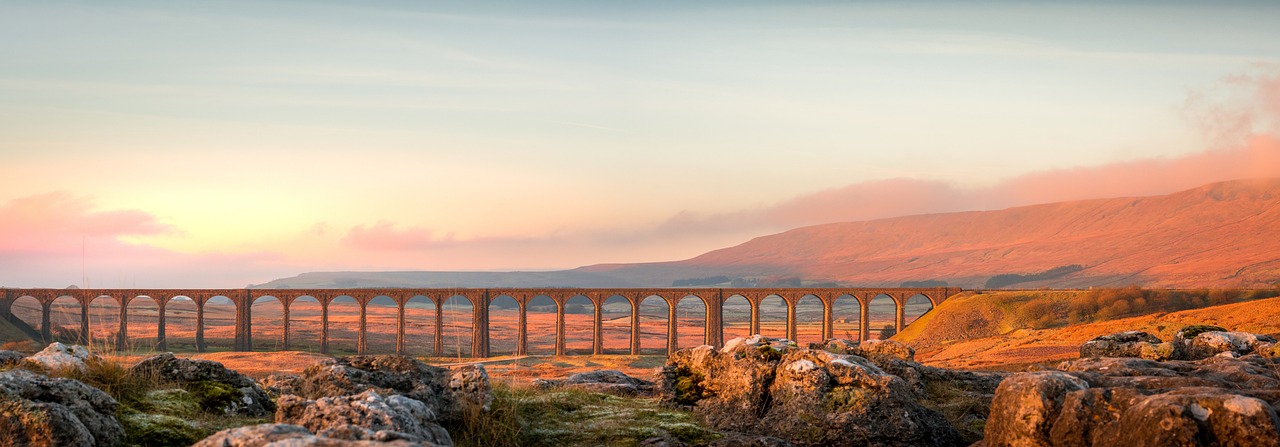
Adjusting Exposure and White Balance
When it comes to capturing beautiful travel photos in harsh sunlight, adjusting exposure and white balance plays a crucial role in ensuring your images turn out vibrant and well-balanced. The intensity of sunlight can often lead to overexposed or underexposed photos if not managed correctly. By fine-tuning your exposure settings and white balance, you can achieve stunning results even in the brightest of conditions.
One effective technique is to pay attention to the highlights and shadows in your composition. By balancing these elements, you can retain details in both the bright and dark areas of your image. This prevents overexposure of the highlights or loss of detail in the shadows, resulting in a more natural and visually appealing photograph.
Additionally, adjusting the white balance is essential for maintaining accurate colors in your travel photos. Harsh sunlight can often cast a warm or cool tone on your images, affecting the overall color balance. By tweaking the white balance settings, you can ensure that the colors appear true to life and vibrant, enhancing the overall quality of your photographs.
Post-processing tools also offer a range of options for fine-tuning exposure and white balance after you have captured your travel photos. Software such as Adobe Lightroom allows you to make precise adjustments to exposure levels, highlights, shadows, and white balance, giving you the flexibility to enhance your images and achieve a professional finish.

Highlight and Shadow Control
When shooting travel photos in harsh sunlight, mastering the control of highlights and shadows is crucial to achieving well-balanced and visually appealing images. By understanding how to manage the contrast between the brightest and darkest areas of your photos, you can ensure that important details are preserved and the overall exposure is optimized.
One effective technique for highlight and shadow control is to utilize exposure compensation to adjust the brightness levels in different parts of the image. By slightly underexposing the highlights and slightly overexposing the shadows, you can retain detail in both areas and prevent any loss of information due to overexposure or underexposure.
Another strategy is to make use of graduated neutral density filters, which help to balance the exposure between the sky and the foreground in landscape photography. By darkening the brighter areas of the image, such as the sky, while keeping the shadows properly exposed, you can achieve a more even distribution of light and minimize the risk of blown-out highlights.
Additionally, post-processing tools like Adobe Lightroom offer advanced options for highlight and shadow control, allowing you to fine-tune the exposure, contrast, and tonal range of your photos. By adjusting the highlights and shadows individually, you can bring out hidden details and create a more dynamic and visually engaging final image.

Post-Processing Techniques
Post-processing is a crucial step in enhancing the quality and visual appeal of your travel photos captured in harsh sunlight. By utilizing various tools and techniques, you can elevate your images to a professional level. One common post-processing technique is adjusting the exposure and contrast levels to ensure a well-balanced look. This involves fine-tuning the brightness and darkness of different areas in the photo to bring out details and prevent overexposure or underexposure.
Another important aspect of post-processing is color correction. In harsh sunlight, colors can appear washed out or too intense. By adjusting the white balance and saturation levels, you can achieve a more natural and vibrant color palette in your travel photos. This step is particularly useful for landscapes or portraits taken in bright sunlight conditions.
Furthermore, sharpening and noise reduction are essential post-processing techniques to consider. Sharpening helps enhance the clarity and definition of details in your photos, especially useful for landscapes or architectural shots. Noise reduction, on the other hand, helps eliminate any graininess or digital noise that may be present in the image, resulting in a cleaner and smoother final photo.
When it comes to post-processing, it's important to strike a balance between enhancing the visual aspects of your travel photos and maintaining their authenticity. Avoid over-editing that can make your images look artificial or unrealistic. The goal is to enhance the natural beauty of the scene you captured while ensuring a professional finish.
Frequently Asked Questions
- How can I improve my travel photography in harsh sunlight?
To enhance your travel photos in bright sunlight, consider adjusting your exposure settings, utilizing shadows creatively, and using filters to control glare and enhance colors.
- What are the benefits of using polarizing filters and lens hoods?
Polarizing filters help reduce reflections and control glare, while lens hoods prevent lens flares and improve image quality by blocking unwanted light.
- How can I create striking silhouettes in my travel photos?
To capture captivating silhouettes, position your subject against a bright light source such as the sun, ensuring a clear outline and a dramatic effect in your images.
- What post-processing techniques can I use to enhance my travel photos taken in harsh sunlight?
Consider adjusting the highlights and shadows, fine-tuning the white balance, and using editing tools to enhance colors and details for a professional finish.











